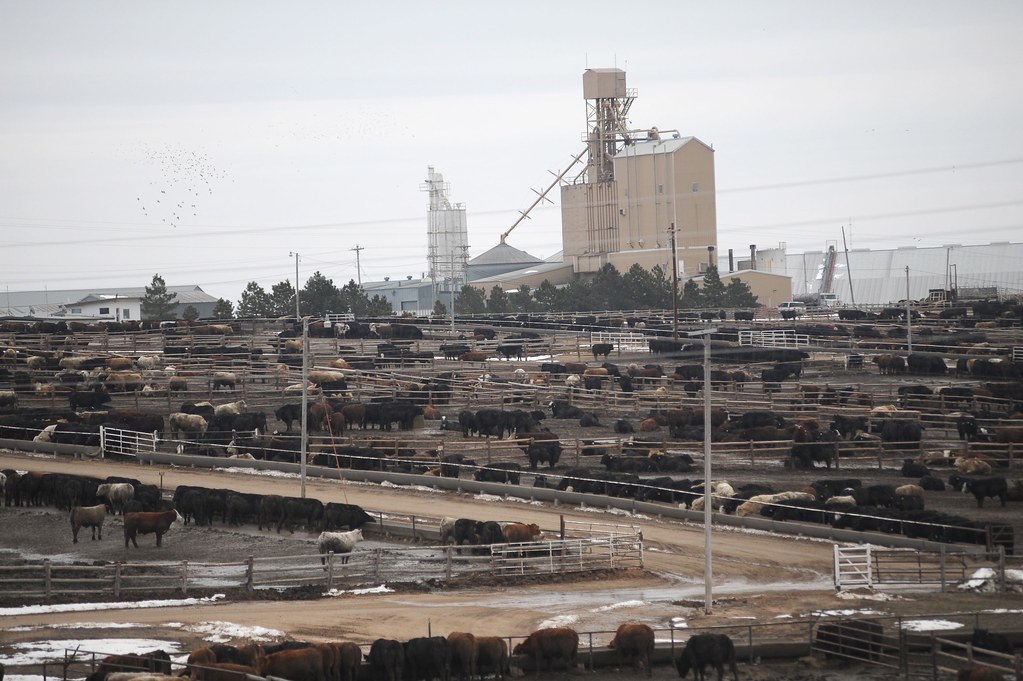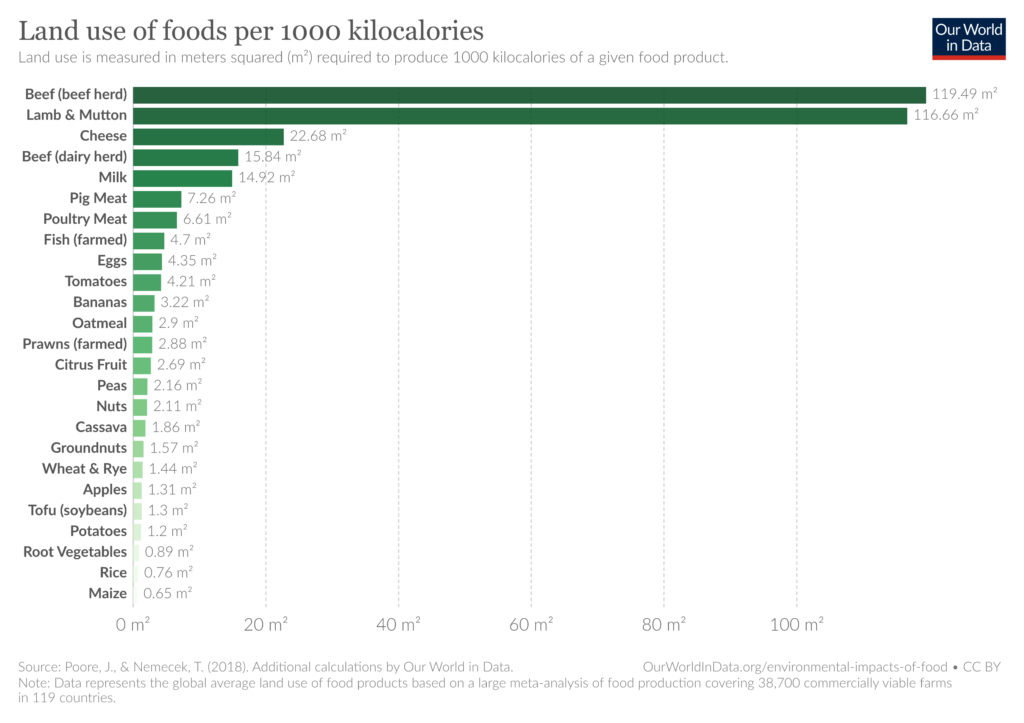
Resource ratios show gross inefficiency

The key to animal agriculture’s contribution to climate change lies in its relative inefficiency as a supplier of nutrition for humans. Raising livestock consumes 77% of agricultural land but supplies only 18% of global calories.1
Obtaining protein from animals that eat plants, rather than directly from plants themselves, uses 11 times more fossil fuels,2 13 times more water and about 15 times more land.3
The following table shows relative environmentally relevant differences between meat protein and a processed protein food based on soybeans (industrial countries)4
| Environmentally relevant effect | Effect of processed protein food based on soybeans | Relative effect of meat protein production |
| Land use | 1 | 6–17 |
| Water requirement | 1 | 4.4–26 |
| Fossil fuel requirement | 1 | 6–20 |
| Phosphate rock requirement | 1 | 7 |
| Emission of acidifying substances | 1 | >7 |
| Emission of biocides | 1 | 6 |
| Emission of copper | 1 | >100 |
The effect of soybean protein–based food is (arbitrarily) given the value of 1.
Another study indicated that growing food exclusively for direct consumption by humans, not animals, could increase available food calories by as much as 70%, which could feed an additional 4 billion people (more than the projected 2–3 billion people arriving through population growth).5
According to a March 2021 analysis from Oxford University’s Our World in Data project, if the world adopted a plant-based diet we would reduce global agricultural land use from 4 to 1 billion hectares – a 75% reduction. An area greater than the entire length and breadth of the Americas is currently used for meat and dairy production.
While all types of meat are more resource-intensive than all types of plant food, beef and lamb and particularly inefficient. It takes about 100 times as much land to produce a kilocalorie of beef or lamb than plant-based food, and almost 100 times as much land to produce a gram of protein from beef or lamb compared with peas or tofu.



As incomes have risen, particularly in Asia, production of the most inefficient foods has soared, a trend that is projected to continue.
REFERENCES
-
1.Ritchie, H. & Roser, M,. Land Use. Oxford Martin School, University of Oxford; 2013:1. Accessed 2021. https://ourworldindata.org/land-use2.Pimentel D, Pimentel M. Sustainability of meat-based and plant-based diets and the environment. The American Journal of Clinical Nutrition. Published online September 1, 2003:660S-663S. doi:10.1093/ajcn/78.3.660s3.Oppenlander RA. Comfortably Unaware: Global Depletion and Food Responsibility. Hillcrest; 2011.4.Reijnders L, Soret S. Quantification of the environmental impact of different dietary protein choices. The American Journal of Clinical Nutrition. Published online September 1, 2003:664S-668S. doi:10.1093/ajcn/78.3.664s5.Cassidy ES, West PC, Gerber JS, Foley JA. Redefining agricultural yields: from tonnes to people nourished per hectare. Environ Res Lett. Published online August 1, 2013:034015. doi:10.1088/1748-9326/8/3/034015